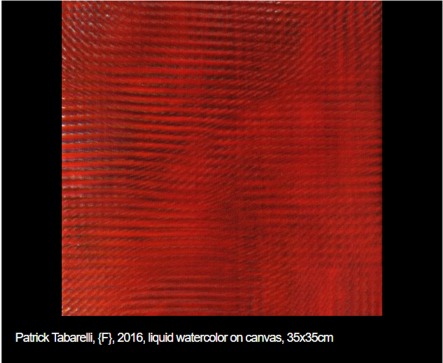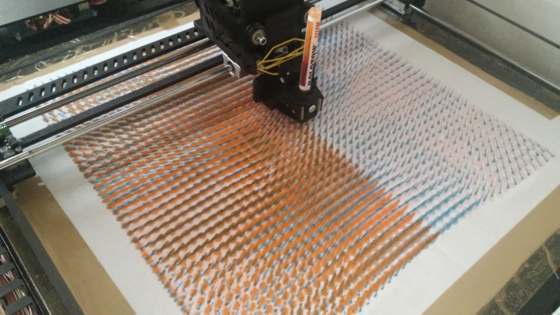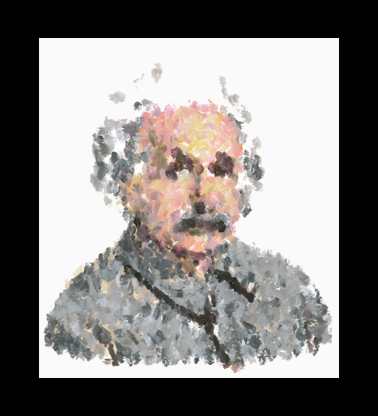| Can Robots Create Art? |
| Written by David Conrad | |||
| Sunday, 22 May 2016 | |||
|
The RobotArt competition was started to explore the intersection of technology and art. For its inaugural contest fifteen teams from seven countries submitted over 70 different artworks. The winners were announced this week with $100K being shared between the participating teams. As Andrew Conru founder of the contest explains: creativity and expression are emerging in unexpected ways from our relationship with technology. This contest hopes to explore and advance its development over the next five years. His expectations for the first year were to get as many student teams as possible to setup a robot that can do any sort of painting. The results were determined by a combination of popular vote (40%), with over 2200 people participating signing in via their Facebook accounts, and a judging panel whose opinion contributed 60%. Originally there were to be two categories - fully automated execution and artwork generated using a human-operated robotic system - but it was difficult to use this distinction in the voting and judging process and it was abandoned. Another change from the original intention was to award the prizes on the basis of teams rather than artworks and as the five teams placed below the top 10 were awarded $1,000 each and Honorable Mentions. The teams came up with an unexpected range of approaches. The A1 team from Carnegie Mellon for example produced works where the human and the robot held a paint brush at the same time. EyePaint, a team from a neurotechnology lab at Imperial College London created an eye tracking system to allow anyone to paint using just their eye movement. An algorithm decodes their movement intention and the user can operate a robot arm, without having to "lift a finger". The 3rd place winning entry, awarded $12,000 was produced by Patrick Tabarelli of the Accademia di Belle Arti di Brera, Milan, Italy.
His NORAA project is an integrated system aiming to explore the field in between algorithms and the physical world and uses a plotting device built on top of an Arduino and using software written in Processing.
His entries were those most admired by the judging panel who explained: Of all the pieces we saw, we thought this one was the most successful artwork produced BY a robot, rather than THROUGH a robot. The fact that the AI develops the image design itself, rather than working from a reference photo or photos, was significant, and the final artwork is a successful abstract, with a simple overall pattern but a more complex structure within. In 2nd place and winning $18,000 was cloudPainter from George Washington University, a father and son team that submitted 16 artworks. Their robot uses a combination of their direction, crowd sourced audience participation, and artificial intelligence to create paintings in a variety of styles, though recently they have been concentrating on portraits.
The judges commented: Although cloudPainter did work from photo reference, the designers allowed the robot to handle the additional step of analyzing a series of reference photos and making its own decision regarding WHICH photo was the most artistically pleasing and producing its own crop of the image. ... The use of the visual feedback loop to determine where and how much to paint is very analogous to the human process of painting. The contest's overall winner TAIDA from National Taiwan University. This team gained the most public votes, did well by the judges, and fulfilled the spirit of the contest by using a physical brush to paint something beautiful. TAIDA submitted this video showing how its system works:
TAIDA also shared the details of its approach: Because we are enthusiastic about both science and art, we thought of combining them together. That’s why the Robot Artist was born! Inspired by human artists' painting behavior, we endowed the Robot Artist with the ability to create colorful artworks based on the visual feedback system. The Robot Artist can use only five basic colors (cyan, magenta, yellow, white and black) to mix a variety of colors. We also introduce the underpainting, which is an artistic technique often used in oil painting, into our painting process. The Robot Artist first covers the canvas with a thin layer of acrylic paint, which can effectively set the basic tone of the painting. Later, it uses the camera attached to the wrist to obtain the current artwork and repeatedly compare it with the original image. A set of hand-painted strokes is then generated using the techniques of non-photorealistic rendering (NPR) to make the artworks better.
You can see all the artworks submitted on the RobotArt site and can sign up with a Facebook account to receive details of the 2017 competition later this year and to be notified when voting on it opens next year,
More InformationRelated ArticlesCirque du Soleil Puts The Spark Into Drones
To be informed about new articles on I Programmer, sign up for our weekly newsletter, subscribe to the RSS feed and follow us on Twitter, Facebook, Google+ or Linkedin.
Comments
or email your comment to: comments@i-programmer.info |
|||
| Last Updated ( Sunday, 22 May 2016 ) |






